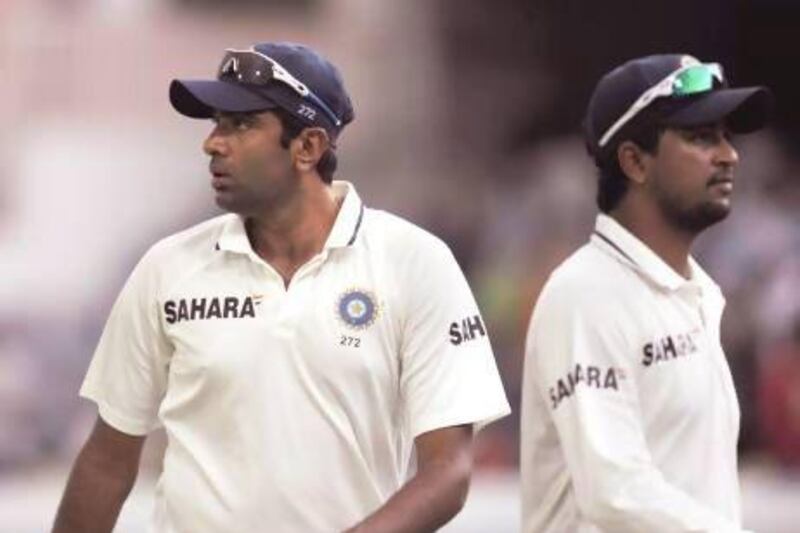Like beaten boxers muttering about a rematch, India's cricketers had returned from 4-0 thrashings in England and Australia murmuring about how different things would be with home advantage.
England were duly hammered 5-0 in a one-day series last year, but 12 months on, Test cricket has proved a far harder challenge. The fix-them-on-our-turf narrative never stood up to sustained scrutiny, and barring a remarkable batting collapse on the final day in Nagpur, England will win the series 2-1.
When that happens, it will be time to re-examine some of the stereotypes that remain about cricket in India and these two teams in particular.
Many sporting stereotypes are based on a kernel of truth, but in this series, that has been miniscule. England's success and India's failure will hopefully result in some of the glib lines being shelved forever.
The biggest myth, of course, is that of India being the land of magical spinners. Since the quartet that dominated Indian cricket stories in the 1960s and 1970s, the country has produced only one truly great spinner – Anil Kumble. Leave him aside, and the finest bowler that India have had in the past decade has been a paceman, Zaheer Khan.
Harbhajan Singh may have taken more wickets, but you can count on the fingers of one hand the number of times he influenced games abroad. For four years, from his return to the side in December 2006 till his form started to wane in early 2012, Zaheer was the side's bowler.
Pragyan Ojha is a lofty fifth in the ICC's bowler rankings, ahead of England's Graeme Swann, but he, like Ravichandran Ashwin (22nd), is very much a work in progress.
For now, comparisons with Swann, Saeed Ajmal and Rangana Herath are merely fanciful. In time, especially with exposure to Tests away from the subcontinent, Ojha may be able to perform the attack-tourniquet role that Kumble managed for so long.
Ashwin, for whom this series has been a harsh lesson, will also improve, especially once he tones down the variations. Right now, the element of surprise has been taken away by the urge to do something different all the time. Whether that is a consequence of limited-overs cricket or not, Ashwin is intelligent enough to make the changes needed.
The series has also served to mock the idea that India thrive on under-prepared surfaces. When a pitch did turn and bounce from Day 1, in Mumbai, it was Swann and Monty Panesar that did far more damage, making use of far greater experience. With VVS Laxman and Rahul Dravid retired and Sachin Tendulkar on the wane, India also did not have the batting wherewithal to survive such an examination.
Before they arrived in India, conventional wisdom suggested England would struggle against the turning ball. Alastair Cook finished the series with 562 runs and three hundreds. Kevin Pietersen managed 338, including a series-turning 186 in Mumbai. England struggle against quality spin, as Ajmal showed in the United Arab Emirates earlier in the year, but India simply did not have anyone of that calibre to probe the weaknesses consistently enough.
England also need to look in the mirror and confront some notions that were, to put it charitably, pure nonsense. Panesar was not part of the playing XI on a slow, low pitch in Ahmedabad – India won by nine wickets – as England went in with three pace bowlers. Pace bowling is England's strength, we were told. Besides, Swann and Panesar do not bowl well in tandem.
The pace bowlers may have played a huge part in winning the Ashes in Australia and in routing India at home the following summer. But in Indian conditions, on pitches where the ball seldom gets knee high, the trust in Stuart Broad and Tim Bresnan was entirely misplaced. Without the skill that James Anderson showed with new ball and old, neither had picked up a wicket going into the final day of the series.
As for Swann and Panesar, it seemed ridiculous to attribute the lack of results – they had played together seven times previously, and England had not won a game – to anything other than dismal batting, especially in the UAE, where England were bowled out for 72 in one Test. In Mumbai, they combined for 19 wickets and left India's batsmen and English experts equally red-faced.
What the series has also shown is the need for balance, no matter what the conditions. England trusted blindly in seam in Ahmedabad and paid the price. India over-egged the spin pudding in Mumbai, and had nothing to show for it.
It was worse in Nagpur where Ishant Sharma was their best bowler for much of the first innings and where Ravindra Jadeja – the fifth bowler, in theory – bowled far more than Ashwin. India had Parvinder Awana in the squad. The Delhi pace bowler can bowl consistently at 140kph and is capable of moving the ball both ways. On a pitch with low bounce, he could have been a handful. Instead, India went in with Ishant and four spinners, with two of them certain to be under-bowled.
Despite these gaffes, more than 20,000 came to the ground – miles away from the city – yesterday and today. Test cricket in India is far from extinct. But a few more pitches as lifeless as this one, and performances as indifferent, and it could well be on the road to ruin.
Follow us
[ @SprtNationalUAE ]





